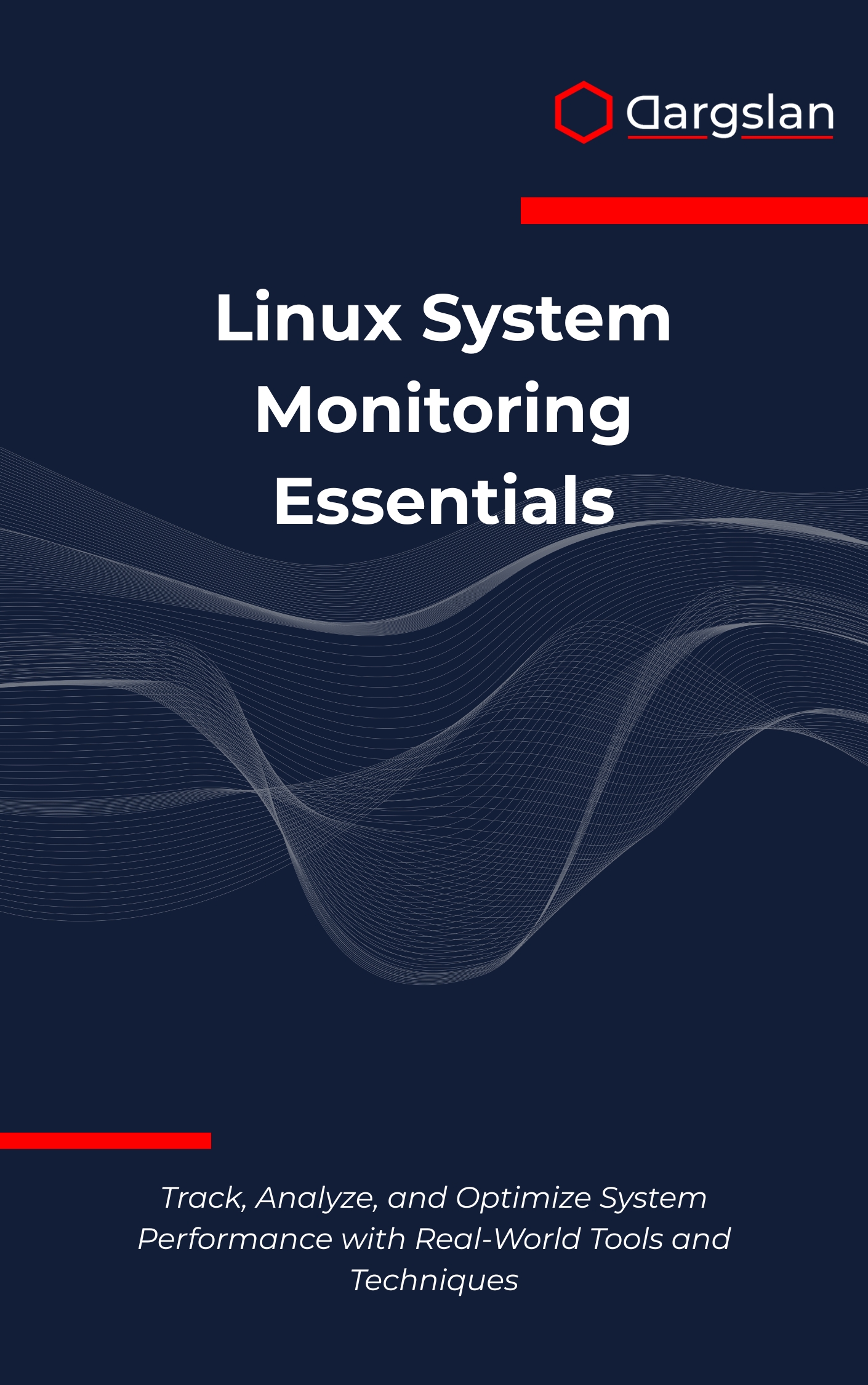Linux System Monitoring Essentials
Linux System Monitoring Essentials,Monitor Linux systems effectively with key performance tools and one-liner commands.

When performance dips, users notice—fast. If you manage Linux systems, this is your path to diagnosing bottlenecks, preventing outages, and building a rock-solid monitoring practice grounded in proven tools and repeatable techniques.
Track, Analyze, and Optimize System Performance with Real-World Tools and Techniques
Overview
Linux System Monitoring Essentials is a practical, end-to-end guide that shows you how to Track, Analyze, and Optimize System Performance with Real-World Tools and Techniques across modern Linux environments. You’ll master Linux system performance fundamentals while building confidence with process and resource monitoring, CPU and memory analysis, Disk I/O and storage monitoring, Network performance evaluation, Log analysis and interpretation, System resource auditing, and Performance profiling tools using native utilities and commands.
Beyond the basics, you’ll design Real-time monitoring dashboards, practice Custom monitoring script development, implement Alert configuration and threshold management, explore systemd monitoring implementation, and plan for Enterprise monitoring integration at scale. It reads like an IT book you can use on the job, a programming guide for practical scripts and automation, and a technical book that connects metrics to meaningful, actionable decisions using Performance optimization techniques and clear Troubleshooting methodologies.
Who This Book Is For
- System administrators who need predictable, stable environments and fewer 2 a.m. incidents. You’ll learn to baseline workloads, spot anomalies early, and use tools like
top,htop,iotop,netstat, andsystemctlto resolve issues before they escalate. - DevOps and SRE professionals seeking repeatable outcomes in hybrid or cloud-native stacks. Expect clear guidance on alert thresholds, dashboards, and pipeline-friendly checks that translate directly into reliability gains and measurable performance improvements.
- Linux professionals and career changers ready to stand out. Build real-world confidence with hands-on labs, interview-ready skills, and portfolio projects that demonstrate mastery of monitoring fundamentals through advanced enterprise implementation.
Key Lessons and Takeaways
- Establish reliable baselines and observability practices anchored in Linux system performance fundamentals. You’ll learn how to read CPU run queues, RAM pressure, and I/O wait, then correlate them to processes, services, and workloads for faster root-cause analysis.
- Turn scattered metrics into decisions with process and resource monitoring, CPU and memory analysis, and Disk I/O and storage monitoring. You’ll apply Network performance evaluation and Log analysis and interpretation to connect symptoms to sources, speeding up triage and recovery.
- Operationalize your insights with Real-time monitoring dashboards, Alert configuration and threshold management, and Custom monitoring script development. Leverage systemd monitoring implementation, Performance profiling tools, and Enterprise monitoring integration to scale observability across fleets.
Why You’ll Love This Book
This guide blends clarity and practicality, pairing each concept with step-by-step workflows you can use immediately. Instead of abstract theory, you’ll get hands-on examples, annotated command output, and scenario-driven labs that mirror production challenges. The result is a pragmatic path from metrics to actions that improves uptime, performance, and team confidence.
How to Get the Most Out of It
- Start with the fundamentals to learn the metrics that matter, then move chapter by chapter through CPU, memory, storage, and networking. Use the early labs to create baseline profiles that you’ll reference as you explore advanced topics like profiling and Enterprise monitoring integration.
- Practice on a staging VM or containerized environment so you can safely run tools such as
vmstat,iostat,sar,ss, andperf. Capture before-and-after snapshots when tuning services, and document findings in a runbook to guide future troubleshooting methodologies. - Build mini-projects as you go: a lightweight dashboard that visualizes CPU steal and I/O latency, a script that parses journal logs for error bursts, and a service check that verifies
systemdunit health with actionable alerts. Each exercise reinforces Performance optimization techniques and scales into production-ready patterns.
Additional Highlights You’ll Gain
- Confident service triage using
systemctland journaling to pinpoint degraded units and recurring failure modes. - Capacity planning techniques that turn trend data into rightsizing decisions for compute, memory, and storage tiers.
- Profiling and tracing workflows with Performance profiling tools to uncover hot paths, lock contention, and scheduler pressure.
- Alert hygiene strategies that reduce noise by aligning thresholds with baselines, SLOs, and known workload patterns.
- Reusable templates, checklists, and a concise commands cheat sheet for daily operations and interviews.
Real Tools, Real Workflows
Every chapter maps directly to tasks you perform in production: measuring saturation on a busy database host, tracking memory fragmentation on application servers, or confirming packet loss paths in a complex network. You’ll move fluidly from simple counters to deep-dive traces, combining Real-time monitoring dashboards with Custom monitoring script development for true end-to-end visibility.
By the end, you’ll not only recognize problems faster—you’ll prevent them with proactive Alert configuration and threshold management, sustainable baselines, and an automation mindset. That’s how reliable systems are built and maintained.
Get Your Copy
Give yourself the tools, frameworks, and confidence to keep Linux systems fast, stable, and transparent. Learn the workflows hiring managers expect and operations teams rely on—then put them to work on day one.




